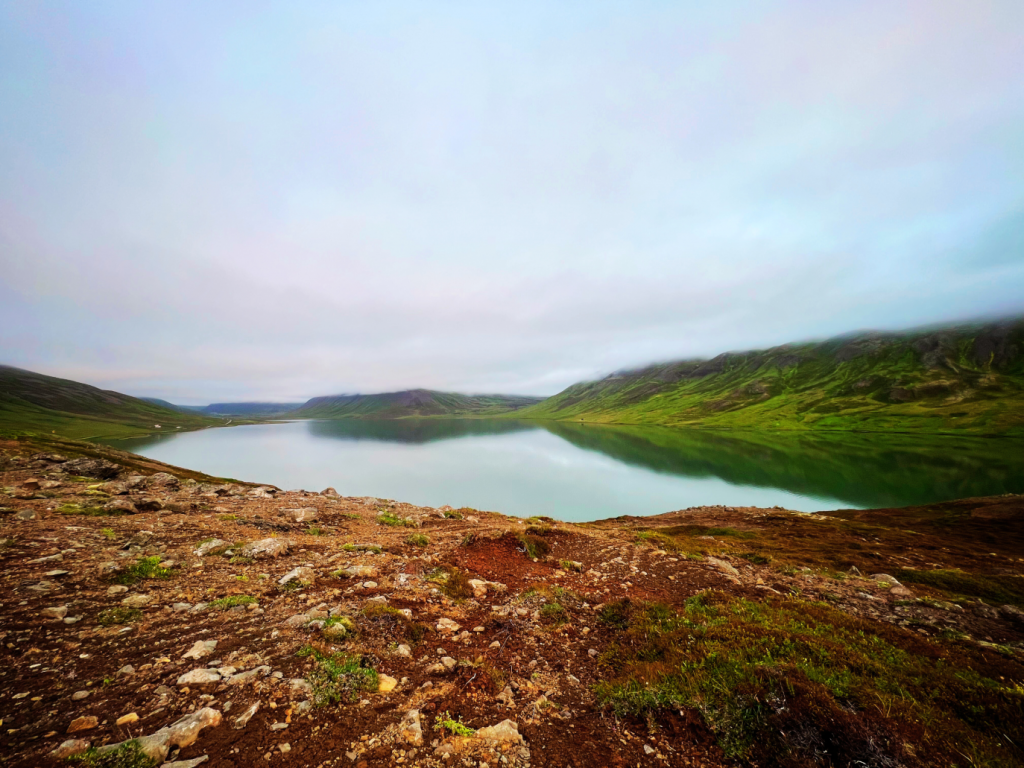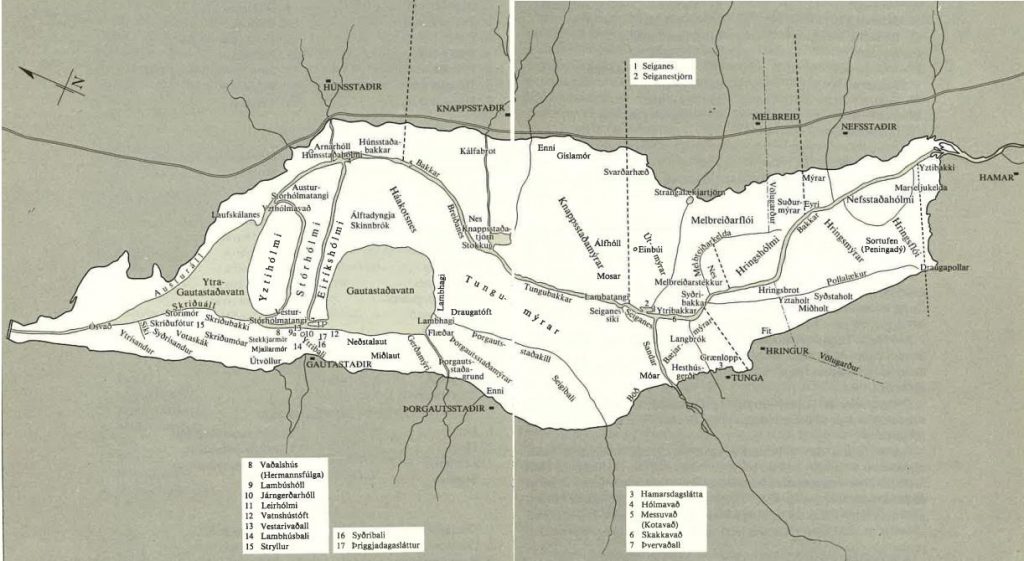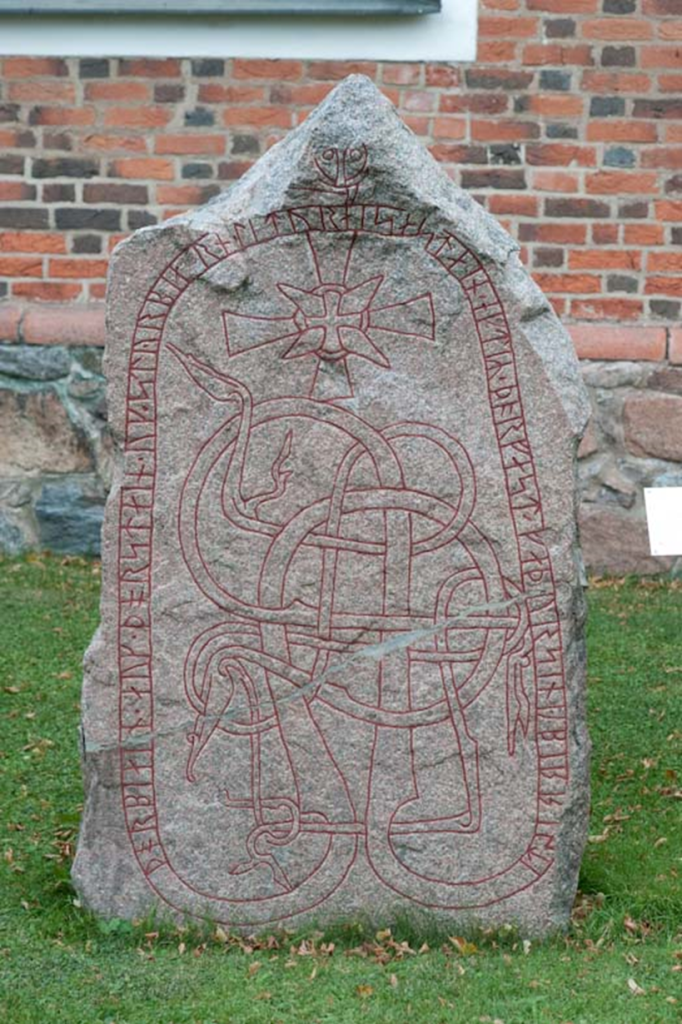Om et navneforklarende element i et sagn fra Samsø
af Martin Sejer Danielsen
Soldater gør indfald i Nordby på Samsø
I fjerde bind af værket Danske sagn (1892–1901) udgivet af folkemindesamleren Evald Tang Kristensen (1843–1929) læser man følgende sagn (udgivet som nummer 453):
Min bedstemoder fortalte mig, at den, hun var kaldt efter, fortalte for hende, hvordan det gik til her, da Polakkerne var her. De lå på skibe her uden for, og der var jo ingen soldater her i byen, men så gik kvindfolkene oppe på klitterne langs med havet med deres røde skjörter oppe over skuldrene og vilde forestille soldater. Men fjenderne kom alligevel i land, og da de kom ind i min faders hjemning i Mårup, tog de alle dynerne og rystede fjerene af og lagde så vårene på deres heste. Der lå et lille barn i vuggen, og det tog de og lagde på gulvet. Derefter tog de også puderne af vuggen og gjorde lige sådan med. Da siger konen: »Har I nu røvet og plyndret alt det, vi har, kan I så ikke lade det kjære barn ligge.« Så rendte de ud og råbte: »Her boer røvere!« Siden fik manden og hans hele familie navnet Røver. Røver-Grete var min mands bedstemoder, og min fader blev kaldt Ras Røver, han hed nu egentlig Ras Printz. Andre steder her i Nordby tog Kosakkerne også dynerne og rystede af ude på marken. De tog börnene og slog dem ihjel og hængte dem op på bjælkehovederne.
Sagnet fortaltes af Mette Printz (1825–1903), en kvinde der havde boet hele sit liv i Nordby på Samsø, netop den egn sagnet også foregår i. Sagnet havde Evald Tang Kristensen selv indsamlet i 1894 sammen med resten af de fortællinger Printz kunne berette.
En nærmere analyse af sagnet i relation til andre af Mette Printz fortællinger og det samfund, hun levede i, vil følge i min artikel der snart udkommer i andet bind af Studier i Samsøs Historie og Arkæologi udgivet af Samsøs Museumsforening.
En lille omvej omkring stednavnene
I min ph.d.-afhandling fra 2017 fokuserede jeg på navneforklarende elementer i sagn, og Printz’ sagn ovenfor hører jo umiddelbart til dette tema. Når det alligevel skiller sig ud, er det fordi objektet for navneforklaring er et personnavn – nærmere bestemt slægts- eller kaldenavnet Røver. Langt de fleste sagn jeg stødte på i Evald Tang Kristensens værker i forbindelse med mine studier, havde nemlig stednavne som forklaret objekt. Naturligvis findes der andre eksempler på sagn hvor ophavet til et kalde- eller slægtsnavn forklares, og jeg har tidligere kommet med et eksempel herpå i anden sammenhæng.
Sådanne ætiologiske (forklarende) elementer, kaldet stedfæster, har en troværdighedsskabende funktion. Sagnfortælleren peger på et objekt fra sin eksterne virkelighed, enten noget fysisk man i princippet kunne tage hen og kigge på (en bemærkelsesværdig stor sten sten på en ellers flad mark, en rød plet på kirkemuren osv.) eller noget kulturelt (et navn, en tradition osv.), og forklarer hvordan objektet er blev til som et resultat af (dele af) sagnets handling.
De snarrådige kvinder
Ved studier af kirkebøger og folketællinger fandt jeg nogle faktuelle oplysninger om sagnfortælleren Mette Printz og hendes liv. Hun havde været gift med skipper Jørgen Degn (1820–1868), men han døde tidligt, allerede som 47-årig i 1868, og Printz havde altså været enke i henved 26 år da hun fortæller sagnet til Tang Kristensen i 1894. Sammen havde ægteparret fået ét barn der overlevede til at blive voksen, nemlig Jensine Degn (f. 1849) der som sin mor også blev gift med en skipper, Søren Peter Degn. Mette Printz levede på aftægt i mange af årene hos datterens familie.
Mette Printz var en meget stedbunden nordlænder, altså her forstået som en person bosiddelse i den nordlige del af Samsø, og hun beskriver i sagnet at hun har rødder i lokalområdet langt tilbage i tiden. Nordlænderne så sig selv som kulturelt anderledes end folk fra den større, sydlige del af øen, og det er netop et tema Printz afsøger i andre af sine sagn. Printz’ sagn ovenfor er altså med til at historisere hendes slægt og forankre den solidt i lokalområdet i Nordby-egnen på Samsø.
Slægts- eller tilnavnet Røver er ikke just flatterende hvis navnet, som det sker i sagnet, associeres med substantivet røver i betydningen ‘person der overfalder og plyndrer vejfarende, rejsende’ (ODS betydning 1.1). Måske sagnet således er med til at sætte navnet i et mere positivt lys med tanke på de handlekraftige kvinder?
Sagnets tema om kvinderne der står alene da truslen kom, og derfor snarrådigt selv håndterer situationen så godt de kan, må i hvert fald have vækket genklang i et samfund hvor mange mænd var på søen i længere perioder, jævnfør hvordan både Printz’ mand, Jørgen Degn, og deres datters mand, Søren Peter Degn, var skippere. Mette Printz og hendes datter må mange gange selv have stået alene om at håndtere hverdagens store og små problemer, også den slags der typisk faldt under mandens ressortområde.












